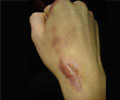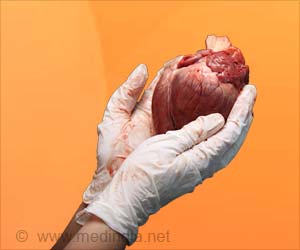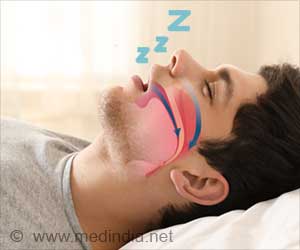Collagen fibrils and fibers provide a mechanical resistance to extension, while elastin allows for deformation in response to low strains.

Skin consists of three layers — the epidermis, dermis and endodermis. Mechanical properties are largely determined in the dermis, which is the thickest layer and is made up primarily of collagen and elastin proteins. Collagen provides for mechanical resistance to extension, while elastin allows for deformation in response to low strains.
The research team began their work by establishing that a tear in the skin does not propagate or induce fracture, as does damage to bone or tooth dentin, which are comprised of mineralized collagen fibrils. What they demonstrated instead is that the tearing or notching of skin triggers structural changes in the collagen fibrils of the dermis layer to reduce the stress concentration.
Initially, these collagen fibrils are curvy and highly disordered. However, in response to a tear they rearrange themselves towards the tensile-loading direction, with rotation, straightening, stretching, sliding and de-lamination prior to fracturing.
"The rotation mechanisms recruit collagen fibrils into alignment with the tension axis at which they are maximally strong or can accommodate shape change," Meyers explained. Straightening and stretching allow the uptake of strain without much stress increase, and sliding allows more energy dissipation during inelastic deformation.
"This reorganization of the fibrils is responsible for blunting the stress at the tips of tears and notches," he added.
Advertisement
Source-IANS















